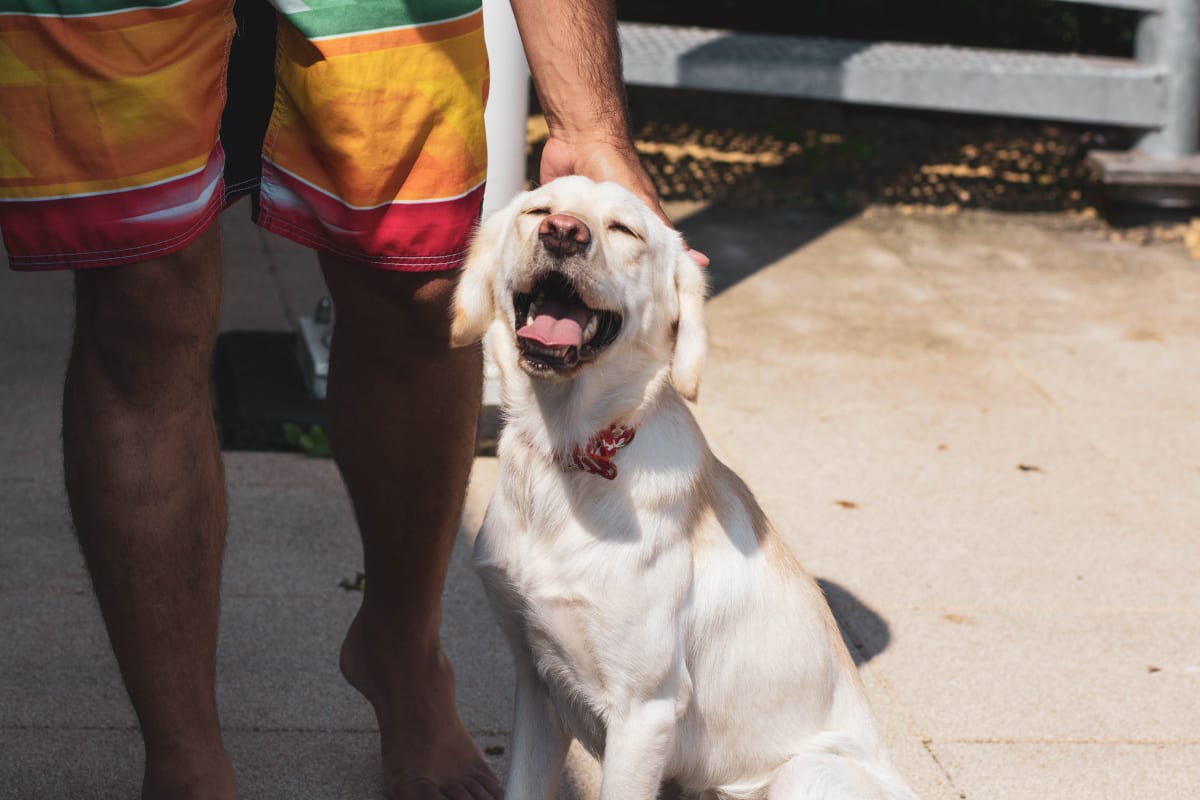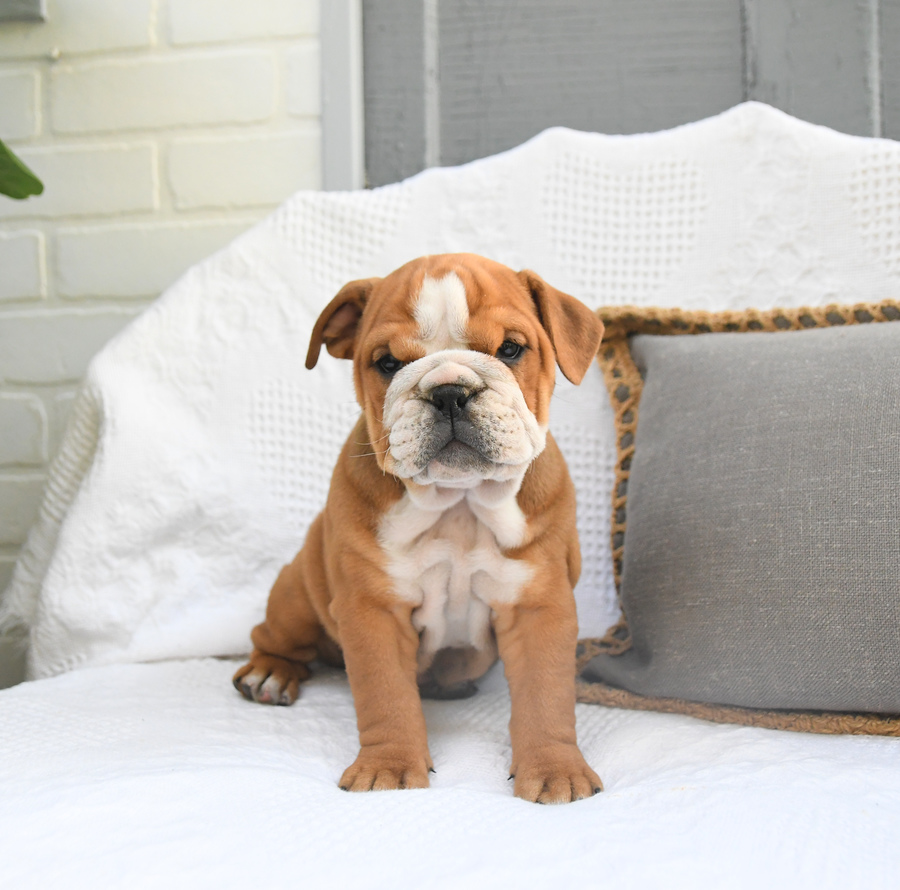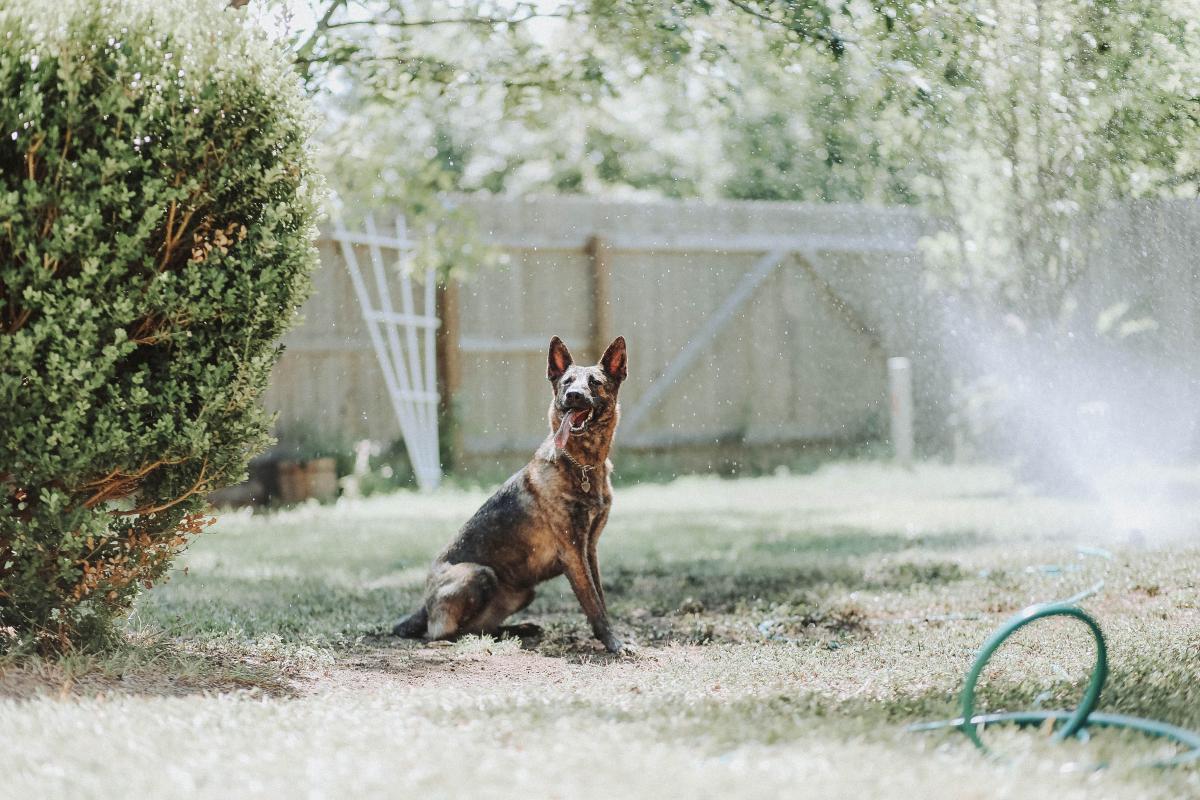Summer is a great time to be outside. From swimming and hiking to lounging outdoors in the sun, there are endless activities to do in the summertime. With all the opportunities to get outside and enjoy the outdoors with your dog, it’s important to keep your pup comfortable and safe in the heat. Keep reading to know when temperatures are too hot for your dog, learn the signs of canine overheating, and get tips for keeping your dog cool throughout the summer.
Signs It’s Too Hot For Your Dog
Dogs don’t have the ability to sweat, making them highly prone to overheating and heat exhaustion. Because they can’t sweat, dogs cool themselves down by panting which helps release the hot air inside them. This is why dogs need access to plenty of cold water on hot days to keep them cool and hydrated.
High Temperatures & Humidity
Days with high temperatures and humidity are especially bad for dogs as humidity can make it harder for dogs to cool themselves down through panting. The risk of heatstroke becomes higher once temperatures hit 80 degrees Fahrenheit or 90% humidity. Even if your dog is just lying in the sun, they can overheat resting outside on a hot day.
If you’re sweating from the heat, it’s usually too hot for your dog to be outside. Dogs have a higher body temperature than humans, so if the day is too hot for you it’s definitely too hot for your dog.
Sidewalk and Pavement Are Too Hot
Even if the day is a bit cooler, the sun can still make the ground too hot for your dog’s paws. Pavement and sidewalks hold heat and are generally significantly hotter than the air’s temperature. If the ground is too hot for you to touch for 5 seconds, it’s too hot for your dog to walk on.
In the summer months, the safest time to walk and exercise your dog is in the early morning and early evening. You can also avoid pavement and sidewalks, keeping your dog on grass or dirt to prevent their paws from being burned. Additionally, products like dog boots and shoes keep your dog’s paws safe and comfortable when walking outside in hot or cold temperatures.
Symptoms of Overheating & Heat Exhaustion in Dogs
When your dog is overheating you’ll notice a significant increase in panting and drooling. As soon as this happens, you need to take time to cool down your dog and give them cold water.

Some serious signs your dog is overheating include:
-
Excessive panting
-
Gray and purple mouth
-
Vivid red tongue and gums
-
Foaming mouth
-
Vomiting
-
Diarrhea
-
Trouble standing
-
Losing consciousness
-
Seizures
Your dog does not need to be showing all of these symptoms to be overheating. It’s vital to take action at the first sign of overheating in your dog, cooling them down immediately. If symptoms become more serious, you should take your dog to a vet as soon as possible. Even if your dog seems to be recovering, it’s important to make sure no damage was done when they were overheating. If action isn’t taken and your dog’s symptoms get worse, death can occur.
Dogs at an Increased Risk of Overheating
Dogs that are old, very young, obese, or have health conditions like kidney or heart problems are very susceptible to heatstroke and overheating. Additionally, dogs with double coats or dark-colored coats can easily overheat in hot weather as their coats absorb more heat and sun. That being said, you shouldn’t shave your double-coated dog. Dogs with double coats naturally shed their undercoats in preparation for summer. Their coats help regulate airflow and body temperature, so by shaving their coats, temperatures will be even hotter for them and lead to sunburn.
Families with dogs that have flat faces, also called brachycephalic breeds, need to be especially vigilant in preventing overheating and dehydration. Flat-faced dogs frequently have breathing problems because of their pushed-in faces. These breathing problems make brachycephalic breeds highly prone to overheating as they struggle with regulating their temperatures on their own.
Brachycephalic breeds include the following:
-
Affenpinschers
-
Japanese Chins
Because dogs pant to cool themselves down on hot days, flat-faced breeds have to breathe harder to get the same relief, causing them to tire out faster and make breathing more difficult. Small and medium dogs that don’t fall under the brachycephalic category are less prone to heatstroke and overheating than large dogs. Keep in mind though that no matter the size of a dog, the pavement and sidewalks can still burn its paws in around a minute when temperatures are high.
Exercising Your Dog in Hot Weather
Dogs shouldn’t be exercised on hot days, no matter how athletic or active they are. It’s best to avoid exercising your dog outside when the temperature is 77 degrees Fahrenheit or above. When it’s hot outside, it’s recommended that your dog burn off energy indoors or by participating in water activities in the shade.
If you must take your dog out on hot days, you’ll want to keep ice, freezer packs, and spray bottles easily accessible to help cool your dog down. Remember to always have cool water on hand for your dog and plenty of shade available for resting and refreshing.
Keep Your Home Cool
Just because a dog is indoors doesn’t mean it can’t overheat. Your home still needs to be kept cool and air-conditioned. Losing power in the summer can lead to tragedy if you aren’t prepared. On very hot days try to check in when you’re not home to make sure your air conditioning is working properly and your dog is comfortable. You can do this through a neighbor, smart home system, or home camera.
Tips for Keeping Your Dog Cool

There are many fun and creative ways to keep your dog cool and comfortable during the summer. You can help ease the heat with the following:
-
Pools & Sprinklers - Let your dog splash around in a kiddie pool, dog pool, or sprinkler. Just remember to keep these activities in a grassy, shaded area so the water and your dog stay cool.
-
Wet Towels & Fans - Make a towel wet, wrap the towel around your dog, and place a fan to blow on your dog.
In hot weather, always make sure your dog is supervised at all times to ensure they are safe and not at risk of overheating.
For more advice on living with and caring for dogs, check out our blog and subscribe to our newsletter to get monthly dog-lover tips sent straight to your inbox. Looking for an adventure buddy this summer? Check out new puppy arrivals on Lancaster Puppies to find your new best friend.
